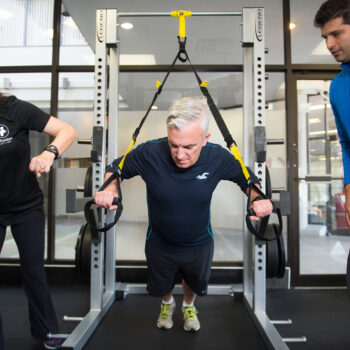When you have a demanding job, a family, AND other responsibilities in life, it’s hard to give up 2-3 hours a day just to go for a run sometimes. Half, or full marathon training can seem like a full time job. But you’re dedicated, you have a specific goal and damnit, you’re motivated!
Steady runs versus interval runs
Once you have a base, try alternating long runs (when you have time) and interval training (when you’re short on time).
During a long run, your goal is to keep at a constant pace for a prolonged period of time. The body works “aerobically” to sustain activity – your breathing is generally at an unchanging rhythm and your heart rate doesn’t speed up or slow down like crazy unless you start to push yourself harder to try and increase your pace. Most of your energy is transformed from the aerobic system (this is why runners should “carbo-load” before a long race).

During interval training, you excite your heart rate and essentially work at two levels, a high intensity period (anaerobically) and a recovery period (aerobic). This forces your heart to pump faster to keep up with your intensity level you are going at to deliver blood to your muscles. Your Rate of Perceived Exertion (RPE) might be up in the 7.5 – 9+ level, and heart rate closer to your 80-90% target heart rate zone). But after a short spurt, you give it a recovery period (RPE of 6 – 8, heart rate in the 75 – 85% THRz).
“But this sounds complicated and haaarrrrd….”
Haha, fear not…it’s really quite easy to do, in fact, I bet you’ve been doing a type of interval training called Fartlek all this time, and never knew it. Gosh, you’re good!
Benefits of interval training
- When done properly, interval training is time efficient – and who doesn’t like efficiency!
- It’s easily adapted for beginners and seasoned experts alike. Conceptually it’s the same but with different ratios, so you could incorporate it now, even if you’re starting your first week of a running program!
- Love that “lactic acid burn”? If so, then you’ll love this training style (because you’re crazy like that and we love you for it).
- Hate that “lactic acid burn”? If so, you’ll love intervals because the bouts are short and under your control, your tolerance will improve, which means better performance!
- You’ll become faster.
- You’ll burn more calories in something called EPOC, but we’ll get to that science another day.
Sample interval training program for short and middle distance runners
4 (reps) x 400m x 2 (sets) = 3.2 km
Pace should be 1-4 seconds faster than ¼ of your best 1 mile time
Relief interval between reps should consist of easy walking and should be the same length of time as the running interval with the rest between sets, twice as long.
For example, 1min 30sec run : 1min 30sec rest
– Repeat 3 more times
– Rest for 3 minutes
– Repeat running for 4 more intervals of 400m with walking recovery periods in between
Incorporate intervals as part of your marathon training program, over 8 to 10weeks. If you’re really keen on improving your time and can handle the mileage (the BMO and Scotia are coming up in month or so, and the Fall Classic is in November, so you can play with your schedule a bit), then interval training 3 times a week will greatly benefit you as well.
If you would like us to help you develop a personalized running schedule, perform a running gait assessment or develop a core and running specific strength training program, or just want to know what Fartlek training is…give us a call or email to info@lephysique.com – Happy running!
Brought to you by Amelia Ng and Nicole Yamanaka







